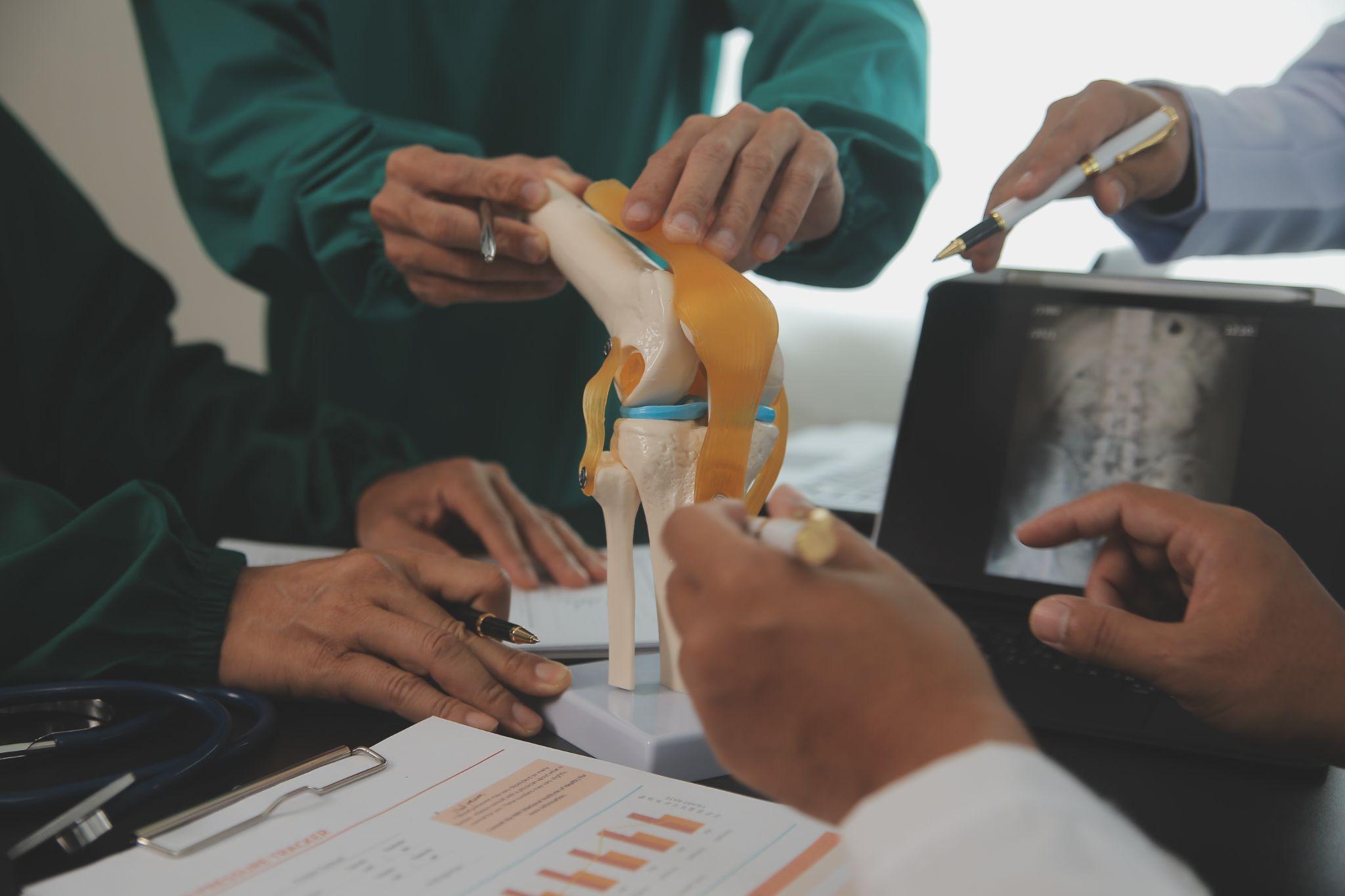Unique Benefits of Unicompartmental Knee Arthroplasty

Unicompartmental Knee Arthroplasty helps preserve the healthy bone and cartilage of the knee, unlike total knee replacement.
Knee arthritis, or wear and tear of the joint cartilage, is one of the most common causes of pain, stiffness, and decreased mobility. When the treatments that don't require surgery (medications, physical therapy, injections) are no longer adequate, knee replacement surgery may be something that many patients consider.
The two major surgical interventions are total knee replacement (replacement of every compartment of the knee) and unicompartmental knee arthroplasty (UKA), or partial knee replacement. In UKA, only the involved compartment is replaced, leaving the healthy sections intact.
As UKA is less invasive, it's becoming popular among select patients. In this article, we write about what UKA is, its unique advantages, best candidates, disadvantages, recovery, etc.
What is Unicompartmental Knee Arthroplasty?
Unicompartmental knee arthroplasty (UKA) is the resurfacing of only one compartment of the knee joint, typically the medial (inner) or, less commonly, the lateral (outer) compartment, which is worn out by arthritis or cartilage wear. The other compartments (not damaged) are not removed, along with the ligaments and the greater part of the bone.
When it is recommended
UKA is indicated if arthritis or injury is limited to one compartment of the knee. If two compartments (or the kneecap compartment) are affected, a total knee replacement is usually the better option.
Your orthopedic surgeon evaluates your knee carefully by physical exam, X-rays, and sometimes an MRI to decide if UKA is a good, safe option.
Unicompartmental Knee Arthroplasty: Distinct Advantages
UKA replaces only the affected part but does not harm healthy structures. UKA has several advantages over total knee replacement. These advantages are maximum at best in well-selected patients.
1. Less Traumatic Incision and Less Invasive Surgery
Less of the knee is operated on, so the incision becomes smaller and the surgery less invasive. Less bone and soft tissue have to be resected. This means less trauma to the operating site, less bleeding, and less disturbance to the surrounding tissues.
2. Faster Recovery and Decreased Hospital Stay
The patients generally can walk with support on the day of or after the surgery. Since the procedure is minimally invasive, the rehabilitation program is shorter compared to total knee replacement. The majority of patients are discharged from the hospital earlier and resume daily activities earlier.
3. More Normal Knee Function
In the UKA, the majority of normal tissues (cartilage, ligaments, and bone) are preserved. Because the knee is not subjected to radical change, the replaced knee will be more natural in feeling when being used to move. Range of motion and "natural" feeling in the knee are frequently reported by the patients.
4. Decreased Pain After Surgery
With less tissue disturbance and a smaller operative field, pain after surgery is typically minimized. This is helpful in early mobilization and makes rehabilitation easier with less pain.
5. Reduced Complication Risk
As surgery is less invasive, complications such as infection, blood clots, and stiffness are relatively lower.
- Less stress on the body means fewer side effects and quicker recovery.
- Because less tissue is disturbed, the risk of complications is reduced.
6. Revision Surgery is Simpler if Needed
If the arthritis returns subsequently in other spaces or the implant deteriorates, a conversion to a total knee replacement is less difficult than a revision of a total knee replacement, because much of the anatomy of the knee remains intact, and the surgeon has more "space" to work with when upsizing.
Both of these reasons join together to make UKA a viable option for suitable patients who want a quicker return to activity, less pain, and more cosmetically enhanced recovery.

Patients experience a faster recovery and a shorter hospital stay after undergoing this surgery.
Who Is the Ideal Candidate for UKA?
Not every patient is a candidate for UKA. Optimum outcomes occur when it is paired with the ideal patient. Ideal patients typically have:
- Arthritis is limited to one compartment of the knee
- Healthy ligaments, stable knee
- No or minimal deformity (not excessively bowed or knock-kneed)
- Good quality bones
- Reasonable body weight
- Motivated to rehab
Sometimes, middle-aged or active patients with early- or mild-stage disease in one compartment are the best candidates. The surgeon assesses your knee condition, alignment, and overall health before recommending UKA.
Potential Drawbacks to Consider
Although UKA has many advantages, there are some limitations and risks to consider:
- Not for widespread disease: When arthritis affects many compartments, UKA will not address the affected areas behind.
- Concerns regarding longevity in some cases: As fewer components are being replaced, there is some increased risk that disease in non-drained regions could progress. Some UKA implants will need revision sooner than total knee implants in suboptimal cases.
- Technique sensitivity: UKA demands accuracy in function and proper patient selection. Proper technique or mismatches can lead to second-best outcomes.
- Future need for surgery: If the arthritis progresses, you may ultimately need a total knee replacement.
- Limited applicability: Not everyone is a suitable candidate. When ligaments are loose, deformity is severe, or the damage is extensive, UKA is contraindicated.
Reality check and believing a surgeon's advice are paramount. UKA is extremely successful in the right hands and patient. But under the wrong scenario, it can fail.
Recovery and Rehabilitation
Early Recovery Timeline
- Most patients begin walking with assistance after a day or two.
- Pain and swelling are managed with medications, ice, and elevation.
- Physical therapy begins almost at once, with a focus on controlled movement and strengthening.
Return to Activities
- Activities of daily living, like sitting, walking, and climbing stairs, resume after the first few weeks.
- Most patients are doing most of their usual activities (within limits) by 4–6 weeks.
- Complete recovery, strength- and endurance-wise, will take a few months, depending on the patient and the protocol.
Role of Physiotherapy
- Physical therapy is the prime mover. The therapist helps you:
- Restore range of motion
- Strengthen surrounding muscles
- Work on balance and gait
- Increase activity levels gradually
Following the rehabilitation plan is crucial; success depends as much on post-op hard work as on the procedure itself.
Long-Term Outlook
Most patients are satisfied with satisfactory knee function, reduced pain, and improved quality of life. If properly monitored and done, UKA can work well for many decades. Many studies report good longevity of UKA prostheses in well-screened patients.

This surgery is especially beneficial for younger, active patients with arthritis in only one knee compartment.
Conclusion
Unicompartmental knee arthroplasty (UKA) has clear advantages: shorter incision, less pain, faster recovery, more natural knee movement, and simpler future revision, if needed.
Because only the involved compartment is replaced while the healthy tissue is left intact, the procedure is less brutal and better tolerated. But only if the patient is correctly chosen and the surgery is optimally executed do the benefits become clear.
UKA is usually best for patients who have localized arthritis within one compartment, good ligament support, and no bad deformity. If knee replacement is on your list of things to consider, ask an orthopedic specialist if UKA is a good choice in your situation. The decision could lead to a faster, smoother way to walking well once again.
Frequently Asked Questions
What is unicompartmental knee arthroplasty?
It is a surgery where only the failing compartment of the knee is replaced without other sections being removed. It's also known as partial knee replacement.
What is the difference between a partial knee replacement and a total knee replacement?
Only one compartment is replaced in unicompartmental knee replacement (UKA). Total knee replacement involves the replacement of all compartments.
What are the advantages of unicompartmental knee arthroplasty?
Advantages are less pain, smaller incision, faster recovery, more natural knee function, less chance of complications, and simpler revision if needed later.
Who is a good candidate for UKA surgery?
A good candidate possesses one-compartment arthritis, stable ligaments, minimal deformity, good bone stock, and rehab drive. It is frequently best for middle-aged active patients with more focal knee trauma.
How long is the recovery time after partial knee replacement?
Most patients begin walking again within a day or two. Activities of daily life return within weeks, and overall functional recovery may occur within a few months, depending on the patient and rehab.
Can a unicompartmental knee replacement be revised later?
Yes. One advantage of UKA is that, in case the arthritis worsens or the implant fails, conversion to a total knee replacement is usually not as complicated as when it comes to revising a total knee.